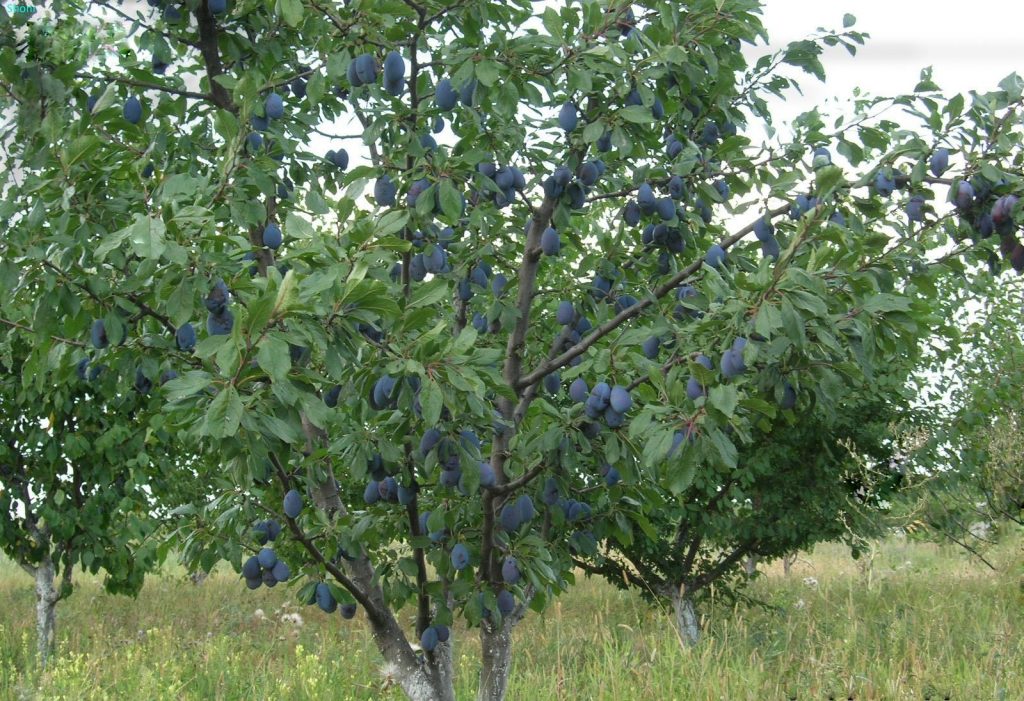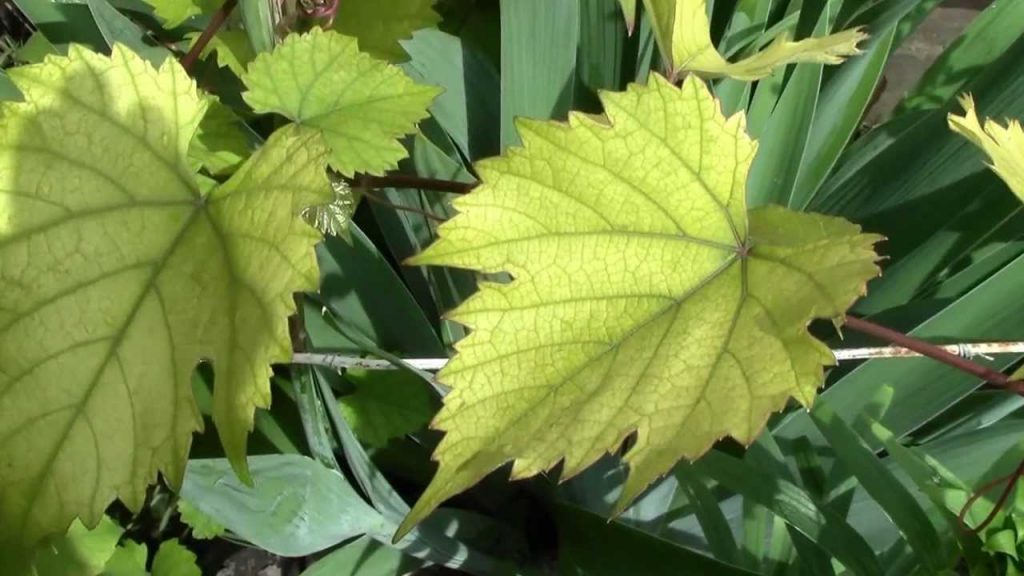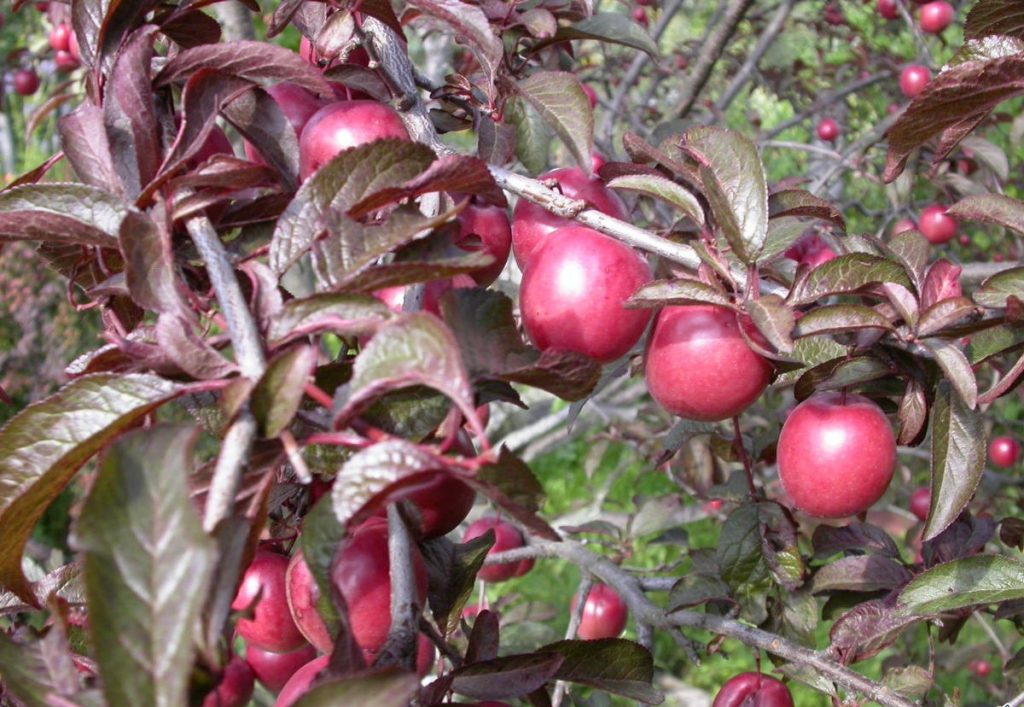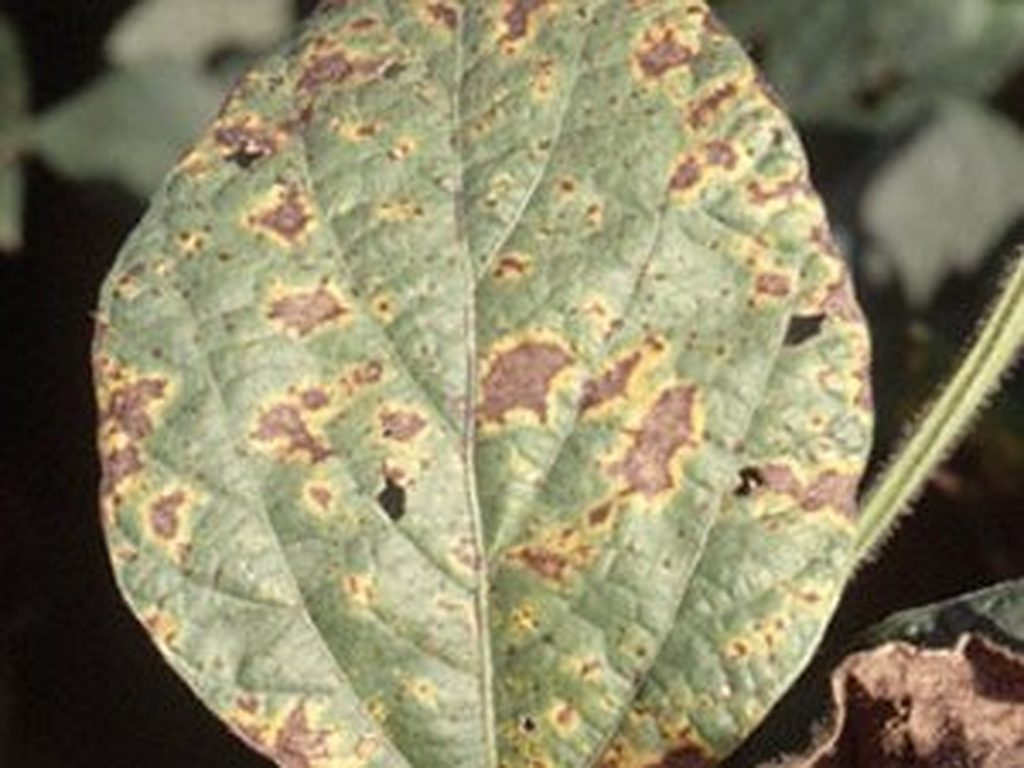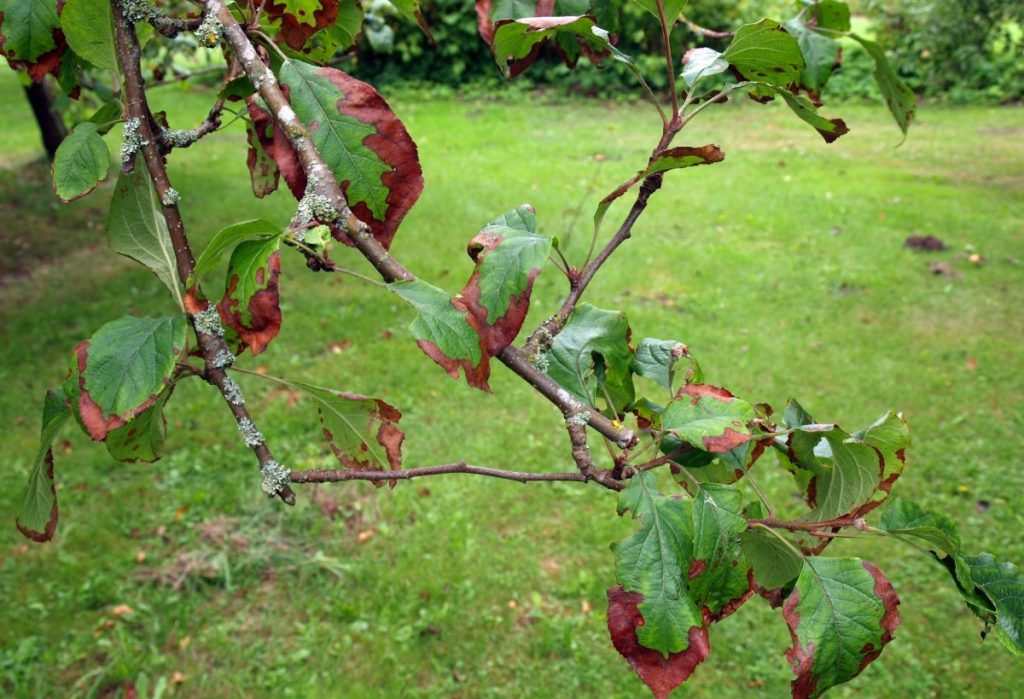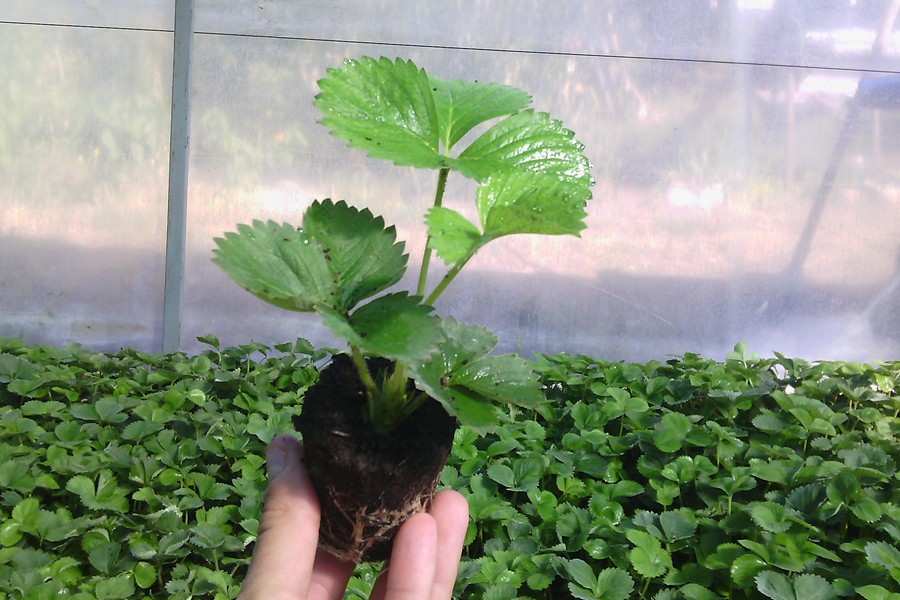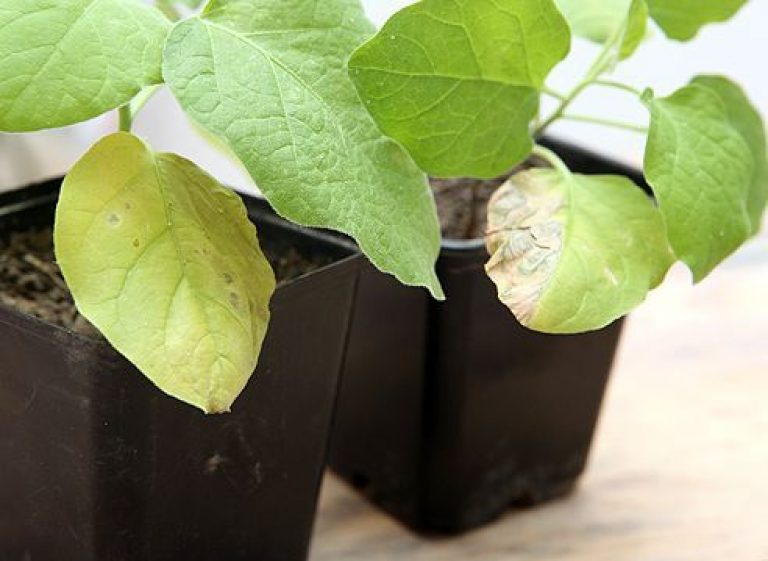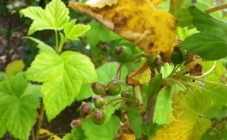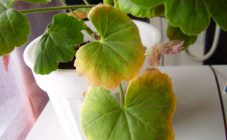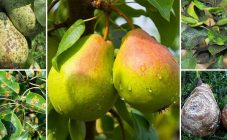Content:
Plum is considered an unpretentious plant among stone fruit crops. However, it is often attacked by harmful insects and diseases. The unhealthy plum is judged by the yellowness of the foliage in the summer. If plum leaves turn yellow, what should gardeners do?
Conditions for growing plums
When planting and growing plums, they are guided by certain requirements.
For plum plantations, areas illuminated by the sun, not blown by the wind, are preferable. They grow well in partial shade. They thrive on fertile soil with a neutral pH. Loam and sandy loam without close groundwater are ideal. The drainage does not like waterlogging of the soil.
When planting, the planting is not thickened, the distance between the seedlings is 7-10 m.
When caring for a plum, do not forget about:
- shaping (spring) and sanitary cutting (autumn) of the crown;
- mulching the near-stem circle with peat for the winter;
- top dressing with organics and fertilizers at the root every 2 years;
- watering with a moisture deficit;
- prevention of diseases and pests.
Sometimes non-observance of the conditions for cultivating plums and caring for them is responsible for why the leaves of the plum certainly turn yellow in June.
Leaves turn yellow (in May or summer in June)
When yellow leaves appear on a plum in May or June, urgent action is required. A change in color at the beginning of summer signals existing problems, which is associated with cultural development or external factors.
There are several reasons:
- Root problems often result in yellow leaves on the plum. The root system is the main component of any culture. Therefore, when purchasing a seedling or transplanting, they focus on it. Perhaps, due to damaged roots, the plum did not take root.
- The nearby groundwater, which is not scary for young seedlings, is a danger to a five-year-old tree. Its roots reach underground waters. Flooding of plum plantations in spring provokes root rot. Such a tree does not give a full-weight harvest. Plum usually dies after a few years.
- The wrong choice of a site and landing in a swampy area or in a lowland where water collects negatively affects the discharge: yellowing of the sheets.
- Aphids are a harmful insect that causes the plum foliage to turn yellow. Characteristic features: its rapid growth and nutrition with tree juices. Aphid parasitism is distinguished from other causes of yellow foliage of plants by a black bloom, which manifests itself on the back of the leaf. Aphid waste is a suitable microenvironment for the propagation of a sooty fungus that completely captures the plum.
Leaves turn yellow and fall
If the leaves turn yellow and fall suddenly on the plum, possible reasons lie in improper care. The tree is susceptible to frost and sudden temperature jumps.
In order for the plum to overwinter well, it should be carefully prepared:
- cut off long branches;
- cover by blocking the access of cold air masses.
Freezing stops the supply of nutrients to the shoots. It's time to add top dressing before the onset of cold weather.
The reasons for the yellow foliage on the plum include a lack of moisture. The phenomenon is often observed during dry summers. If the plum dries up, it is required to carry out hydro-procedures. Pour out at least 6 buckets weekly for a month. Otherwise, the tree will turn yellow before the onset of autumn.
Pests and phyto-diseases are responsible for the yellow color of the leaves. Plum is exposed to numerous attacks of fungi, viruses, bacteria. For this reason, the foliage becomes shallow and yellow. For the successful fight against harmful insects and diseases, it is important for gardeners to navigate the symptoms and not to be late in taking adequate measures against parasites and carrying out prevention.
Verticillosis
At the heart of the disease is a fungus. The infection enters the tree due to microtrauma, spreads everywhere, prevents the access of nutrients and water, giving rise to yellow foliage. The leaves then curl up and fall off. As a result, the plum dies.
Coccomycosis
Refers to a serious plum disease that gives rise to fungal spores. Yellow spots indicate the development of phyto-disease. Their distinctive features are a gradual increase in size and occupation of the entire area of the sheet plate. With the spread of coccomycosis, the foliage dries up or crumbles. Inhibition of life processes in the drain occurs. Bordeaux mixture or copper sulfate are reliable defenders against the disease.
Leaves turn red
With the predominance of sandy loam and sandy soil on the backyard, a lack of magnesium is noted and explains why the leaves of the plum turn red. Further, the leaf dies off from the edge, it curls and wrinkles. The tree is characterized by early shedding of leaves, shedding of fruits, including green ones.
Red color spots on the leaves also indicate the defeat of a fungal infection, which is caused by:
- bad light:
- insufficient aeration of the crown;
- excessive air humidity;
- unfavorable garden neighborhood, which contributes to the infection of the plum with a fungus.
To the culprits why plum leaves turn red in summer, they are reckoned:
- polystygmosis;
- rust;
- clasterosporium disease.
For a productive battle with pathogens of phyto-diseases, it will be necessary to correctly establish their symptoms and external circumstances, which contribute to the development of the disease. If the diagnosis is established correctly, they begin to destroy harmful microorganisms.
Curly leaves appear
Potash hunger causes water imbalance and is affected by the curly plum. In unhealthy trees, the leaves curl upward, yellowness appears at the tips, which is shaded with a blue tint, and then turns black.
Silvery leaf color
This is a symptom of a dangerous illness - a milky sheen. A fungal disease affects the plum, causing silvery foliage. The disease is characterized by the rapidity and death of the seedling. To cure a plum, it is required to cut off and burn infected branches in time when a silver coating is found. When the affected area is located in the bark or on the trunk, the surface is cleaned and sprayed with copper sulfate. Processing with iron sulfate is suitable - in a ratio of 4: 100. When the tree is difficult to save, it is best to uproot it.
Leaves turned white
A lack of manganese and iron is why plums have light green leaves. With prolonged hunger, the leaves gradually turn pale. Then the pale leaves fall off. The manganese content is directly determined by the composition of the soil. In order not to brighten the plum leaves, it is important to observe the acidity of the soil. If necessary, they are fed with mineral or organic fertilizers. Sand is usually added to the soil to prevent the concentration of manganese in the soil.
Light (pale) green leaves
With a nitrogen deficiency, the leaves have a light green color, which slowly turns yellow. The growth of the tree stops. The oversaturation of the soil with nitrogen contributes to the rapid growth of plums, covering with large dark bumpy leaves.The plum blossoms and bears fruit with a fair delay.
Leaf plates turn white if they feel a lack of phosphorus. They are characterized by rigidity and growth at right angles. The tree stops bearing fruit.
Plum chlorosis treatment
Chlorosis is one of the most common phyto-diseases of the plum. At first, the foliage turns pale, and then crumbles.
The root causes of chlorosis include:
- shading of plantings inhibits the production of chlorophyll, which is responsible for the green color of plants;
- an excess of lime in the soil;
- freezing of branches - urgent resuscitation and care will be needed;
- summer drought and poor watering;
- loam: retention of moisture for a long period causes root rot;
- oxygen starvation of the root system due to spring flooding of the soil;
- deficiency of minerals in the soil (nitrogen, iron, magnesium);
- making moves with moles that damage the roots.
Sometimes chlorosis has an infectious breed. Fungi or bacteria are to blame for the development of the disease. Then specks or dots appear on the leaf plate, which merge, and the leaf acquires an entirely yellow tint.
Treatment with Antichlorosin is appropriate at the initial stage of the disease. Iron sulfate (2%) for spraying is also used for plum chlorosis in the course of treatment. The plums are fed by Khilat.
Fight against fungal pathologies
Antifungal agents are used. Remove infected areas on trees. In case of rust, you will need to remove anemone, which have been carriers of infections for many years. Treated with copper sulfate (1%). You will need to spray the plantings 2 times.
With klyasternosporis and coccomycosis, you will have to remove the leaves and all damaged branches. Spray with products that contain copper. When the Bordeaux mixture turned out to be powerless in the fight against polystygmosis, the chemical is replaced with copper oxychloride (0.3%) or a solution of zineb (0.4%).
When infected with a fungus, plum seedlings are treated with special chemicals:
- Vitaros;
- Previkur;
- Topsin-M.
Fighting aphids
Chemical preparations showed effectiveness: Spark, Thesis. Popular with gardeners nhome remedies:soap, as well as powder mustard solution.
If groundwater is close
If the plum grows in an area with a high groundwater table and gets sick every year, the young plant is transplanted or uprooted. Another tree is planted in a new place.
This applies to cases of annual flooding of plum plantations during floods in spring or heavy rains in summer.
When transplanting and restoring plums, foliar fertilization with nitrogen is suitable.
If the shadow gets in the way
When a young plum grows in the shade of tall trees and turns yellow without time, it is better not to take risks and transplant the crop to another place. Postponing the operation for a couple of years will make it more difficult to perform. Will get to choose between uprooting a plum sapling or cutting down a nearby tree.
Preventive measures
The occurrence of various fungal diseases is provoked by the same reasons.
Prevent infection plum plantings will succeed if the following requirements are met:
- choose an appropriate planting site;
- cut off shoots in a timely manner;
- provide crown ventilation;
- do not flood trees;
- disinfect instruments when processing plums;
- the affected branches and leaves are eliminated;
- antiseptics are used to treat cracks and cuts.
Proper care ensures minimal use of fungicides for prevention purposes.
Spraying plums is carried out three times:
- In late autumn, when the tree has shed its leaves.
- Before the spring plum blossom.
- After flowering plants.
A popular drug for fungal ailments is copper sulfate. It is recommended to mix soap into the spray solution. The ingredient increases the antibacterial effect and improves the adhesion of the honey product to the foliage, trunk and plum branches.
Preventive measures include treating plums with the arrival of spring before the leaves appear or after they fall in late autumn with Bordeaux liquid (3%) and urea solution (5%).
Chemicals are suitable:
- Karbaphos and Fufanon;
- Calypso and Karate;
- Mospilan and Aktara.
Changes in the appearance of plums are caused by a lack of watering or nutrients. At first, foliage suffers, which lacks nutrition: clarification, yellowness, abscission. To prevent pallor of the deciduous cover, it is advisable to plan the application of fertilizing - the fertilization system changes from the soil where the plum grows.
Knowing the reasons why the leaves turn yellow or shine on the plum will allow you to quickly cope with the problem and prevent its occurrence in the future.
